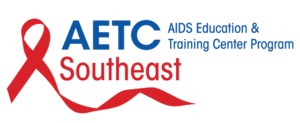Practice Transformation Resources
Resources for Transforming Your Practice
On this page, you will find resources and sample protocols to help you take steps along the path toward providing specialty HIV care: from information about HIV stigma and how to reduce stigma in the clinical environment, to where to begin with screening and testing for HIV, to preventing and treating HIV, to information on becoming a patient-centered medical home. We have compiled these sample protocols, links, guides, tools, videos, and more to give you a solid, curated list of reliable and up-to-date information to help increase your knowledge about HIV. The Southeast AETC has also developed a self-paced learning course on transforming your practice that you can access here.
- Stigma
- HIV Testing
- Pre-Exposure Prophylaxis (PrEP)
- Antiretroviral Therapy (ART)
- Patient Centered Medical Homes (PCMH)
HIV stigma refers to negative attitudes and beliefs about people with HIV. It is the prejudice that comes with labeling an individual as part of a group perceived to be socially unacceptable. This section provides resources on defining, addressing, and tackling HIV stigma in the clinical environment.
Archived Webinars
Helpful Links
People with HIV who know their status can get HIV treatment (called antiretroviral therapy or ART), achieve an undetectable viral load, become unable to transmit HIV to others, and remain healthy for many years. People who get tested and learn they do not have HIV are also able to make informed decisions about sex, drug use, and personal health care that can reduce the likelihood of acquiring HIV. This section provides resources on setting up an HIV testing program, delivering test results, and linking to care after an HIV test, either for PrEP or treatment with ART.
Archived Webinars
Guides
Helpful Links
Protocols
One of the most powerful tools we have at our disposal to end the HIV epidemic is pre-exposure prophylaxis to prevent HIV. Pre-exposure prophylaxis, or PrEP, is medicine taken to prevent acquiring HIV. PrEP is highly effective for preventing HIV when taken as prescribed. When taken as prescribed, PrEP reduces the risk of getting HIV from sex by about 99% and reduces the risk of getting HIV from injection drug use by at least 74%. This section provides resources on setting up a PrEP program, information on who might benefit from PrEP, and more.
Archived Webinars
Guides & Guidelines
Helpful Links
Antiretroviral therapy (ART) reduces HIV-related morbidity and mortality at all stages of HIV infection and reduces HIV transmission. Studies show that the sooner people start treatment after diagnosis, the more they benefit from ART. Treatment with ART reduces the amount of HIV in the blood (called viral load), reduces HIV-related illness, and helps prevent transmission to others. People with HIV who take HIV medicine as prescribed and get and keep an undetectable viral load (or stay virally suppressed) have effectively no risk of transmitting HIV to others. This section provides resources on prescribing ART to treat HIV.
Archived Webinars
Guides & Guidelines
- HIV/HCV Drug Therapy Guide (University Health Network)
- Information on Crushing and Liquid Drug Formulations (University Health Network)
- Immediate ART Initiation & Restart: Guide for Clinicians (AETC National Coordinating Resource Center)
- STD Treatment Guidelines (CDC)
- Laboratory Testing for Initial Assessment and Monitoring of Patients with HIV Receiving ART (HIV.gov)
A PCMH is a model of care that strengthens the clinical patient relationship by replacing episodic care with coordinated, holistic, and long-term care. The primary care clinician works alongside a team of clinical and community health providers who take collective responsibility for patient care. They coordinate care for the patient’s health needs and arrange for appropriate care with other qualified health services. This section provides resources and further information on what qualifies as a PCMH, and how to go about achieving status as a PCMH.
